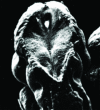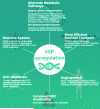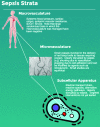Subcellular Energetics and Metabolism: A Cross-Species Framework
- PMID: 28525507
- PMCID: PMC5439307
- DOI: 10.1213/ANE.0000000000001773
Subcellular Energetics and Metabolism: A Cross-Species Framework
Abstract
Although it is generally believed that oxidative phosphorylation and adequate oxygenation are essential for life, human development occurs in a profoundly hypoxic environment and "normal" levels of oxygen during embryogenesis are even harmful. The ability of embryos not only to survive but also to thrive in such an environment is made possible by adaptations related to metabolic pathways. Similarly, cancerous cells are able not only to survive but also to grow and spread in environments that would typically be fatal for healthy adult cells. Many biological states, both normal and pathological, share underlying similarities related to metabolism, the electron transport chain, and reactive species. The purpose of Part I of this review is to review the similarities among embryogenesis, mammalian adaptions to hypoxia (primarily driven by hypoxia-inducible factor-1), ischemia-reperfusion injury (and its relationship with reactive oxygen species), hibernation, diving animals, cancer, and sepsis, with a particular focus on the common characteristics that allow cells and organisms to survive in these states.
Figures






Comment in
-
Subcellular Energetics and Metabolism: A Cross-Species Framework.Anesth Analg. 2017 Dec;125(6):2160. doi: 10.1213/ANE.0000000000002476. Anesth Analg. 2017. PMID: 29028746 No abstract available.
-
In Response.Anesth Analg. 2017 Dec;125(6):2160-2161. doi: 10.1213/ANE.0000000000002477. Anesth Analg. 2017. PMID: 29189369 No abstract available.
References
-
- Karl DM. Hidden in a sea of microbes. Nature. 2002;415:590–1. - PubMed
-
- Dunwoodie SL. The role of hypoxia in development of the Mammalian embryo. Dev Cell. 2009;17:755–73. - PubMed
-
- Kelly DP. Hypoxic reprogramming. Nat Genet. 2008;40:132–4. - PubMed
-
- Kuypers MM, Sliekers AO, Lavik G, Schmid M, Jorgensen BB, Kuenen JG, Sinninghe Damste JS, Strous M, Jetten MS. Anaerobic ammonium oxidation by anammox bacteria in the Black Sea. Nature. 2003;422:608–11. - PubMed
-
- van der Wielen PW, Bolhuis H, Borin S, Daffonchio D, Corselli C, Giuliano L, D'Auria G, de Lange GJ, Huebner A, Varnavas SP, Thomson J, Tamburini C, Marty D, McGenity TJ, Timmis KN, BioDeep Scientific P. The enigma of prokaryotic life in deep hypersaline anoxic basins. Science. 2005;307:121–3. - PubMed
Publication types
MeSH terms
Substances
Grants and funding
LinkOut - more resources
Full Text Sources
Other Literature Sources
Medical

